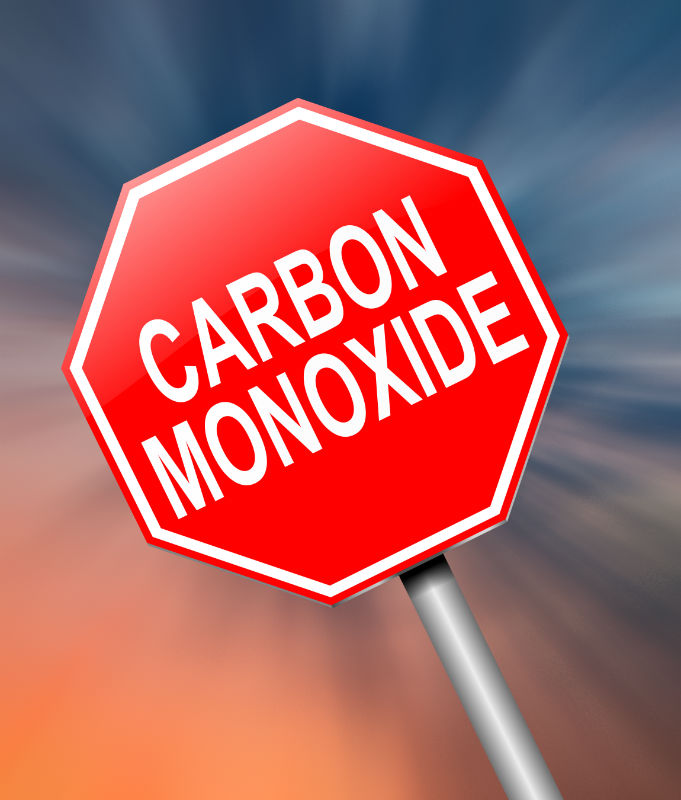When winter rolls around, it’s not uncommon for homeowners to get a fire going without first having the entire chimney system inspected to ensure that its operating at peak levels. Little do they know that there could be blockages—debris build-up from repairs and/or renovations, spider webs, leaves, bird nests, etc.—in the chimney, which prevent harmful combustion gases from being ushered up and out of of your home; this can lead to carbon monoxide poisoning. Carbon monoxide (CO), which is a byproduct of combustion, creates the possibility for serious health hazards and potentially even death.
 What Carbon Monoxide Can Do to You
What Carbon Monoxide Can Do to You
To explain it simply, carbon monoxide is highly toxic to our body. To put it more scientifically, If given a choice between carbon monoxide and oxygen, our bodies will more readily welcome in the carbon monoxide because of the protein structure of our red blood cells. Carbon monoxide has almost the same molecular structure as that of an oxygen molecule, yet somehow, our hemoglobin more readily attaches to carbon monoxide. These toxic chemicals will be circulated through your bloodstream and will be distributed all over your body which can lead to serious health hazards such as respiratory failure, organ damage or even death.
Symptoms of Carbon Monoxide Poisoning
It’s hard to detect symptoms of carbon monoxide poisoning. Some people are asymptomatic – people with no visible symptoms at all – while others will exhibit symptoms rather quickly. In most cases, people experience symptoms that are quite similar to those of the common cold and/or flu, including but not limited to exhaustion, chronic fatigue and/or generalized depression. Carbon monoxide is colorless and odorless, making it extremely hard to detect, meaning that you could be breathing in this toxic concoction and be completely unaware. Getting fresh air as soon as you notice any of the warning signs is key, as is seeking immediate medical attention to verify your suspicion.
Carbon Monoxide Leak Prevention
Before the heating season begins, have a trained professional inspect your fuel burning appliances, oil and gas furnaces, gas ranges, water heaters and fireplaces. Make sure your chimneys and flues are well swept and well connected and in good working condition. Blockage in these areas can lead to leaks. Avoid using unvented gas or kerosene space heaters if at all possiblle. Keep some of the windows open to ensure enough air ventilation.
Installing Carbon Monoxide Alarm
Over the years, carbon monoxide alarms have grown in popularity and are a high-demand precautionary measure. Installing at least one battery-powered CO alarm or AC-powered unit with a battery backup on each level of your home as well as near sleeping quarters; plan to check the batteries regularly to ensure your home is still being monitored. Upgrading each of these units every 5-7 years is also strongly recommended, as it will help to ensure that you have the most up-to-date technology monitoring the



